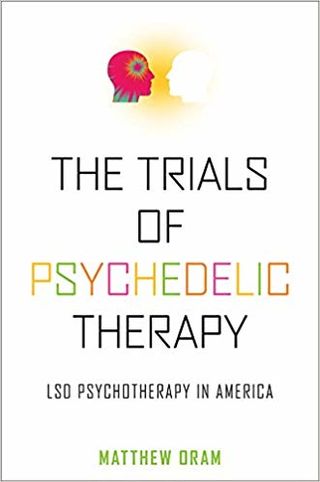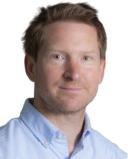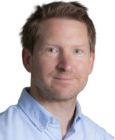Psychiatry
The History of Psychedelic Therapy: What Can We Learn?
An interview with Matt Oram, author of "The Trials of Psychedelic Therapy."
Posted March 3, 2020
The following interview is with Dr. Matt Oram, the author of The Trials of Psychedelic Therapy: LSD Psychotherapy in America. It has been edited for clarity and brevity.
Richert: There’s a lot of discussion about psychedelics these days. Some people have called the present moment a "psychedelic renaissance." Can you tell us more about this? And how does your book add to the story of LSD?
Oram: Slowly since the late 1990s and with quickening pace over the last decade, scientists have begun again exploring the therapeutic potential of psychedelic drugs, a field of research that previously took off in the 1950s but which came to a standstill in the mid-1970s. Modern research, at numerous institutions including Johns Hopkins University, New York University, and the University of New Mexico, has largely picked up where LSD research ended in the 1970s, replicating the same treatment methods, and with the same or similar types of patients, but mostly using psilocybin—the active ingredient in "magic mushrooms"—instead of LSD.
Canadian psychiatric researchers developed a treatment known as "psychedelic therapy" in the 1950s, initially to treat chronic alcoholism. The technique consisted of the administration of a single, large dose of LSD to the patient in a supportive environment, after significant preparatory psychotherapy. The aim was to produce a transformative mystical-type experience that allowed the patient to see their life and patterns of behavior from a new perspective. This could powerfully instill patients with new values and attitudes that could lead to lasting behavioral changes. Early studies reported an astounding 50 percent success rate with chronic, treatment-resistant cases of substance use disorder. The technique was soon picked up in the US and numerous research groups over the 1960s attempted to systematically assess the effectiveness of the treatment and apply it to new patient groups, to treat anxiety and depression associated with terminal cancer, psychoneuroses, and opiate addiction.
My book reassesses the history of LSD research in the US, closely following its development from the start of the 1950s to its demise in the 1970s, and connects this to ongoing attempts to return psychedelics to research and medical legitimacy from the beginning of the 1980s. In doing so, it not only closely charts the progress of LSD research and its regulation by the US Food and Drug Administration over the period but also provides a new analysis of the reasons for its demise, one with significant implications for modern researchers.
R: In your book, you powerfully suggest that LSD failed to live up to its promise of entering and revolutionizing mainstream psychiatry. Can you unpack this?
O: LSD arrived in the United States in 1949, and research in the 1950s took place in the context of the breakthrough era of psychopharmacology research. LSD seemed set to take its place alongside other drugs of the era that revolutionized psychiatry, such as chlorpromazine (Thorazine) for psychosis, the first tricyclic and MAOI antidepressants, and meprobamate (Miltown) and diazepam (Valium) for anxiety.
Psychiatric researchers from diverse backgrounds all saw significant potential in the drug: As well as the psychedelic therapy method for treating substance use disorder, psychoanalysts explored using smaller doses over multiple sessions with their patients (a technique known as psycholytic therapy) to deepen and quicken therapy through LSD’s apparent ability to release unconscious material and produce abreaction (an emotional reliving of past traumatic experiences). Further, other researchers believed LSD produced an "artificial psychosis" that demonstrated that the origins of psychoses lay in biology rather than psychology. Supporting this, the first antipsychotics blocked LSD's effects. By studying the action of these drugs, researchers believed the mysteries of schizophrenia would soon be revealed.
Despite all this enthusiasm and promise, LSD research declined over the 1960s before concluding in the 1970s, leaving little influence on psychiatry or psychology until the recent revival of clinical research.

R: Chapter 4 centers on Spring Grove State Hospital and you call it "Against the Tide"—can you tell us about some of the characters and the experiments?
O: The LSD research program at Spring Grove State Hospital, Maryland, was the longest, largest, most significant, and successful LSD research program ever undertaken in the US, spanning 1963 to 1976. Despite its significance, little has previously been written about the program, and its narrative goes against the common view of the trajectory of LSD research in America—the Spring Grove research thrived and continuously expanded over the 1960s, even as LSD became controversial and criminalized and research is typically depicted as coming to a close.
The Spring Grove research program was founded by experienced psychiatric researcher Albert Kurland and NIMH psychologist Sanford Unger in 1963, at an inopportune time: That year saw the first significant LSD scandal, as Timothy Leary and Richard Alpert were dismissed from Harvard over the conduct of their psychedelic research, beginning Leary's path towards countercultural LSD evangelist. It was also the year that new regulations tightened FDA control over all pre-market drug research and installed new high standards for clinical drug research.
As a result, the number of researchers using LSD began to decline. Not only did accessing the drug become more complex, but research was required to take the form of controlled clinical trials that needed more funding, manpower, and institutional support. From the mid-1960s, the controversy over increasing non-medical use of LSD grew to a fever pitch, and the drug was increasingly criminalized through legislation passed between 1965 and 1970.

Despite these developments, research and Spring Grove flourished over the 1960s. As well as being director of research at Spring Grove, Kurland was director of research for the Maryland State Department of Mental Hygiene, so he was in a strong position to champion psychedelic research and his studies were well funded by the NIMH.
Kurland and Unger's research began with a plan to assess the remarkable reports of LSD's effectiveness in treating chronic alcoholism by conducting a randomized, double-blind, controlled clinical trial of the treatment. Over the decade the research program continuously expanded, with controlled trials launched assessing the effectiveness of psychedelic therapy for three other clinical indications: psychoneuroses, anxiety and depression associated with terminal cancer, and narcotic addiction. Their staff also expanded, growing to include a who's who of psychedelic researchers, including Charles Savage, a pioneer who had been conducting psychedelic research since 1949, Walter Pahnke, famed for his studies of the similarly between psychedelic and spontaneous mystical experiences at Harvard (known as the "Good Friday experiment" or the "miracle at March Chapel"), Stanislav Grof, a Czechoslovakian psychiatrist who was one of Europe's most experienced psychedelic researchers, and William Richards, a psychologist who would go on to be instrumental in the revival of psychedelic research at Johns Hopkins University in the 2000s.
In 1968, the research team moved into dedicated new facilities at the Maryland Psychiatric Research Center, a major new facility that Kurland directed and that featured suites specially designed for psychedelic treatment. At the end of the 1960s, it seemed that the Spring Grove research would confirm the effectiveness of psychedelic therapy and plans were in place to expand to other facilities.
R: Chapter 6, "The Quiet Death of Research," discusses how LSD psychotherapy research declined relatively quickly in the 1970s. Can you tell us about the gradual end of the research phase?
O: There is a common misconception that LSD research was terminated by the drug's prohibition before sophisticated studies could be developed to properly assess its therapeutic value. In fact, between 1967 and 1971 results were published from seven controlled clinical trials that assessed the use of LSD in treating alcoholism. They varied in sophistication, and may meet the standards expected of modern clinical trials, but they were much more sophisticated than the small anecdotal studies of the 1950s. They were all funded by either the NIMH or the Veterans Administration.
Six out of seven of these studies reported negative results—LSD appeared no more effective than the control conditions. The Spring Grove study was the only one to report positive results. However, these results were underwhelming in the face of the other negative studies: Results were significant for the experimental treatment at the 6-month follow-up point but not at the 12- or 18-month points.
Yet the results for the negative studies should not be taken at face value. The original claims for LSD's value in treating alcoholism were for the specific technique of psychedelic therapy, which involved significant preparatory psychotherapy (up to 20 hours) and a carefully crafted treatment technique. Yet only the Spring Grove researchers replicated this technique. Most of the other studies involved no significant psychotherapy and paid little attention to other aspects of the treatment technique. They were therefore not fair evaluations of the treatment.
Yet this situation was overlooked by most scientific and regulatory observers, who were used to evaluating treatments that involved simply the administration of a drug. Although the Spring Grove researchers employed the psychedelic therapy technique, they encountered other difficulties in the design of their clinical trial that likely diminished a clear evaluation of treatment effectiveness. Ultimately, to the scientific community, it appeared that LSD had failed to live up to the hype. Funding subsequently dried up and most researchers moved away from the field. By 1975, five research groups maintained FDA approval to conduct LSD research, but only the Spring Grove researchers were still active. The program concluded in 1976 after a change of management at the Maryland Psychiatric Research Center. A splinter group revived a small study in 1979, and the last FDA-approved dose of LSD was administered around 1986.
R: It's obvious that you're contributing vitally important current events/debates. What matters most to current researchers?
O: Important lessons from the past can be found in the design of clinical trials—in the need to balance the unique treatment techniques of psychedelic therapy with the rigors of controlled clinical trials. Psychedelics pose unique challenges for researchers. As the effects of drugs like LSD and psilocybin are so dramatic, inert placebos are useless in control groups. Further, many past researchers considered LSD to have no inherent beneficial effects, but rather saw the drug as a tool in a greater psychotherapeutic context. It is challenging to design studies that provide a high level of comparative control and objective assessment while factoring in all of the components of psychedelic therapy.
Past research strongly suggests that the simple administration of psychedelics without the further techniques of psychedelic therapy is insufficient for effective treatment. But important questions remain for current researchers: not only whether or not the full technique of psychedelic therapy is effective, but how much preparatory psychotherapy is needed, what form of therapy leads to best results, what is the role of other elements of "set and setting," and how can their benefit be maximized?
R: What can we expect in the next few years with psychedelic therapy?
O: This is a very difficult question. The progress of research over the last 10 years has been very impressive and it can appear that positive phase 3 studies and FDA approval are inevitable. Yet the situation was similar in the early 1960s.
The challenges of designing large-scale studies that balance the needs of therapy and science are still significant. Research has so far appeared remarkably uncontroversial, given the history of these drugs, but this situation could change at any point. Further, if psychedelics do become FDA approved, important questions remain over how the drugs would be administered outside of the carefully controlled confines of clinical studies. If high levels of therapy and supervision are needed for safe and effective treatment, how would this be regulated and would the associated cost become prohibitive for those who need treatment most? The future certainly looks promising, but there are many questions and potential hurdles ahead.
For more, listen to this recent podcast.
References
M. Oram (2018). The Trials of Psychedelic Therapy: LSD Psychotherapy in America. Baltimore: JHUP.




